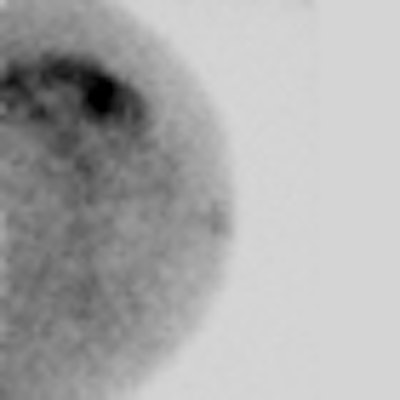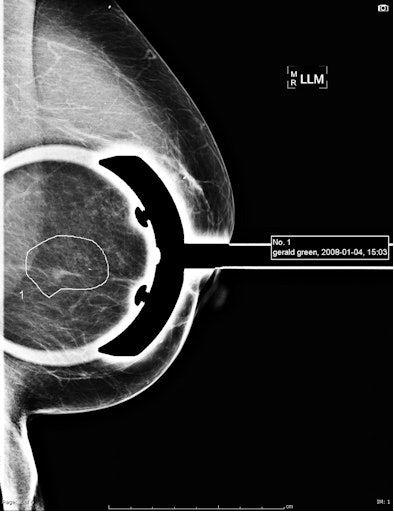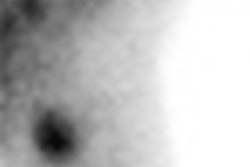
Researchers in Oregon have concluded that breast-specific gamma imaging (BSGI) is equivalent to MRI as an adjunct imaging modality for diagnosing breast cancer. BSGI may be particularly useful in evaluating women at high risk for cancer, or those with dense breasts.
In comparing the two modalities, the researchers noted that MRI has become increasingly popular as an adjunct to mammography for diagnosing breast cancer. But despite its sensitivity in detecting mammographically occult breast lesions, the modality's high cost and patient discomfort can make MRI less than ideal.
Study co-author Dr. Nathalie G. Johnson, medical director of the Legacy Cancer Institute in Portland, added that BSGI's use of high-resolution cameras offers high sensitivity, even in women with dense breast tissue. The study was presented at the RSNA 2011 annual meeting.
Community sample
The researchers used BSGI technology from Dilon Diagnostics, which has developed a molecular breast imaging technique designed to detect breast carcinoma. BSGI is often used in presurgical planning for patients with known cancer diagnoses.
The study analyzed data collected prospectively and retrospectively from a community health system database of patients screened for breast cancer between 2006 and 2009. Johnson and colleagues included patients who underwent both MRI and BSGI within a two-month time period.
Of 698 patients, 53 with a mean age of 55 years met the study's inclusion criteria. There were 38 abnormal mammograms among those 53 subjects. A total of 25 women (47%) were found to have cancer on pathology. The median tumor size was 0.85 cm.
BGSI showed positive results in 30 patients, 20 of whom had cancer, representing a false-positive rate of 36%, the researchers found. MRI results were positive in 32 patients, with 19 women having cancer, for a false-positive rate of 46%.
BSGI was negative in 23 cases, with five women having confirmed cancer, for a false-negative rate of 20%. By comparison, MRI was negative in 21 individuals, with six individuals having cancer, for a false-negative rate of 24%.
The positive predictive value of BSGI was 67%, compared with a positive predictive value of 59% for MRI. BSGI's negative predictive value was 78%, compared with a 71% negative predictive value for MRI.
BSGI also achieved sensitivity of 80%, compared with 76% for MRI. Specificity was 64% for BSGI, compared with 54% for MRI.
 |
| The mammogram image (above) shows the detected tumor in the left breast, but the BSGI image (below) uncovers a much larger extent of disease. Images courtesy of Dr. Nathalie G. Johnson and Legacy Cancer Institute |
 |
The results also showed that MRI was positive and BSGI was negative in 11 patients. Of those 11 cases, four individuals (36%) were found to have cancer. In 11 other cases, BSGI produced positive results, while MRI results were negative. Of those 11 cases, six women (54%) had confirmed cases of cancer.
BSGI identified a tumor previously undetected by other imaging modalities in three individuals, with subsequent MRI also producing positive results. BSGI also detected three additional contralateral malignancies and one ipsilateral cancer.
BSGI results led to further workup and detection of occult malignancies. While no cancer was found within one year of a negative BSGI finding in any patients, 22 patients (42%) were recommended for additional imaging based on BSGI results, with nine patients (17%) undergoing subsequent biopsies or surgery. Negative MRIs without contradictory BSGI results would have led to six missed malignant tumors, Johnson and colleagues noted.
Cancer detection
In conclusion, BSGI "has an equal sensitivity for the detection of breast cancer, even in patients with dense tissue," Johnson told AuntMinnie.com. "It also has a higher specificity, which makes it attractive. It also picked up additional ipsilateral lesions and some contralateral lesions that changed surgical management of patients."
At Legacy Cancer Institute, BSGI is used preferentially for patients with newly diagnosed breast cancer. "Mammography and ultrasound remain the first tools used. BSGI is added in patients with extremely dense breast tissue," she said.
As for future research, Johnson said BSGI "could play an integral role in reducing screening misses in women with greater than 70% breast density, and we hope to pursue further study in this patient population."




















